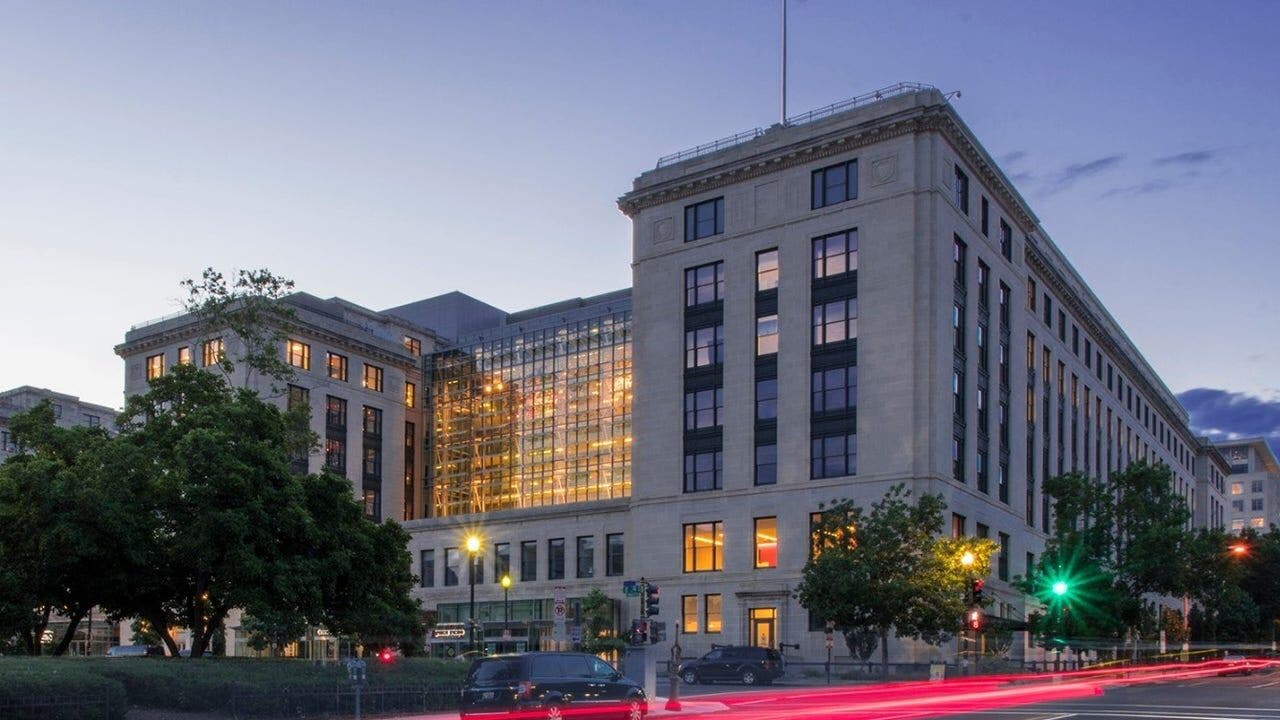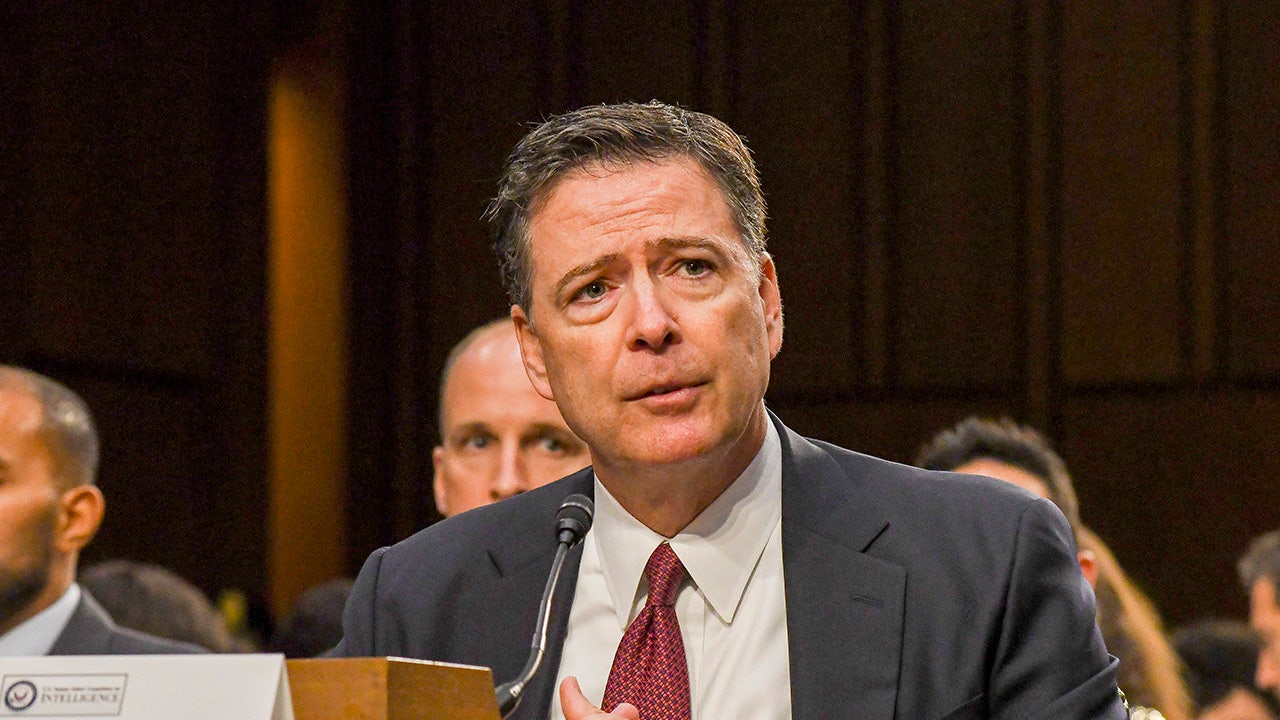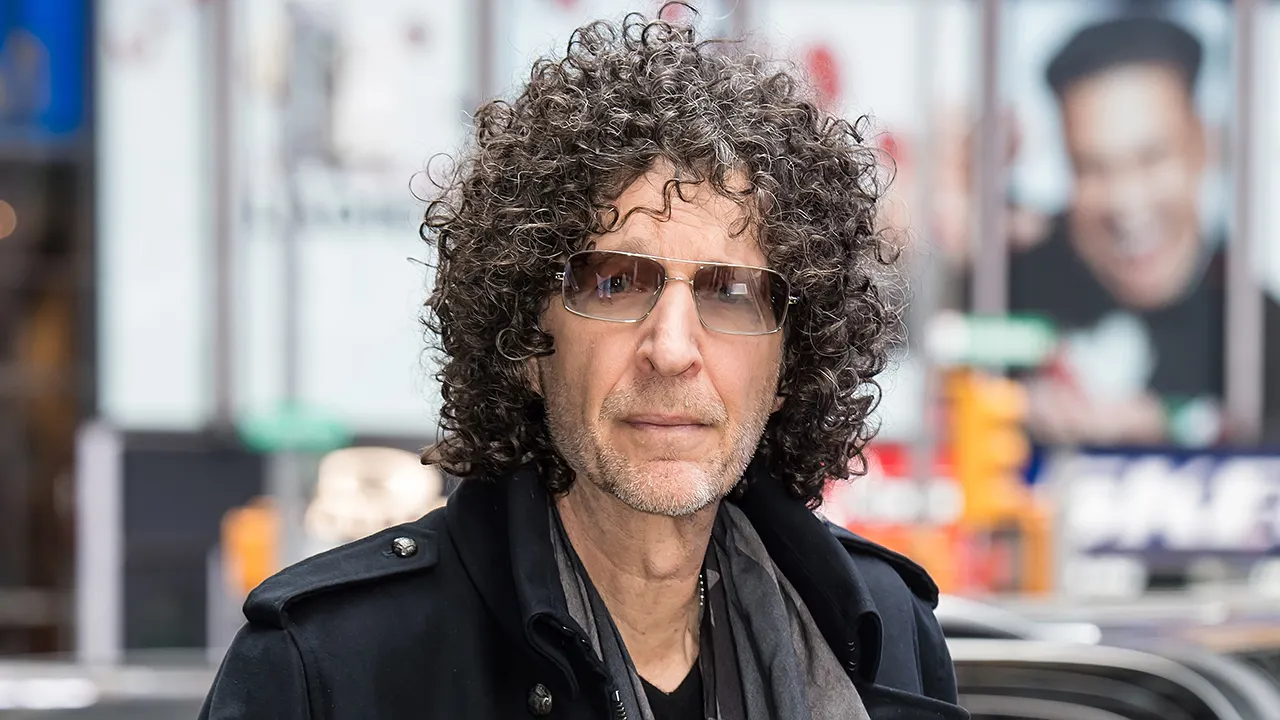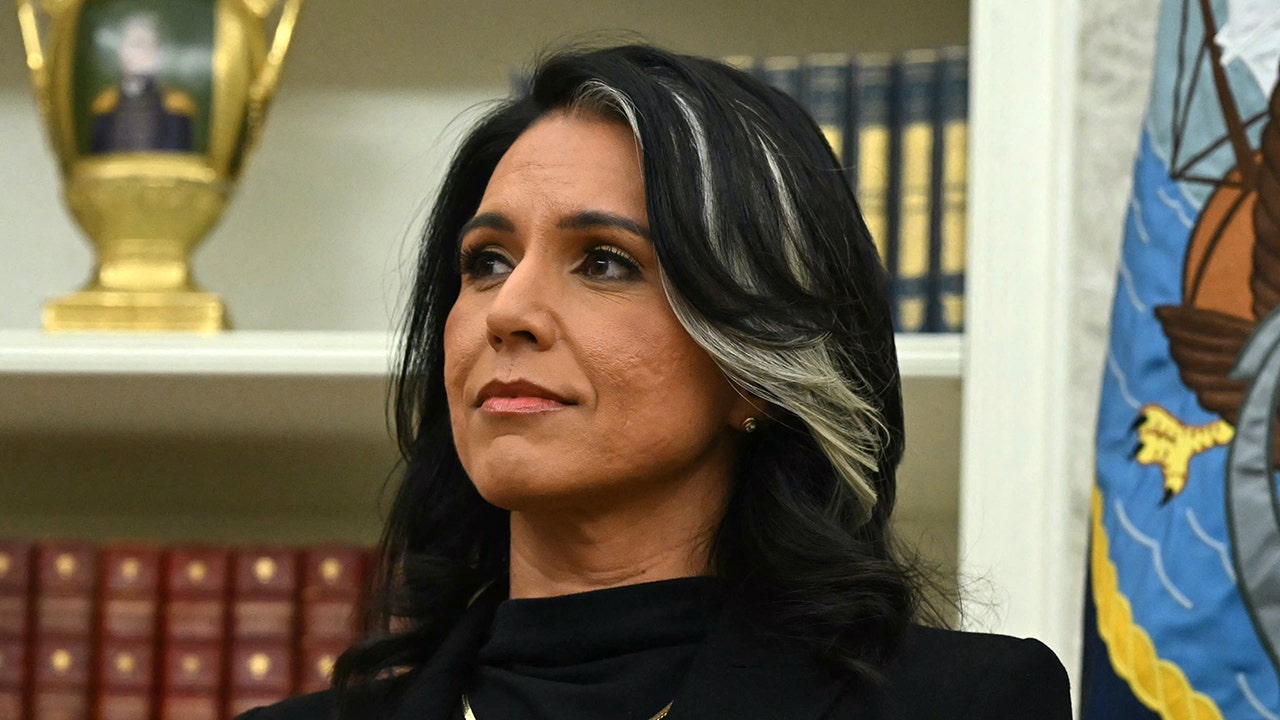World
Pakistan’s ex-PM Nawaz Sharif back from self-exile ahead of elections
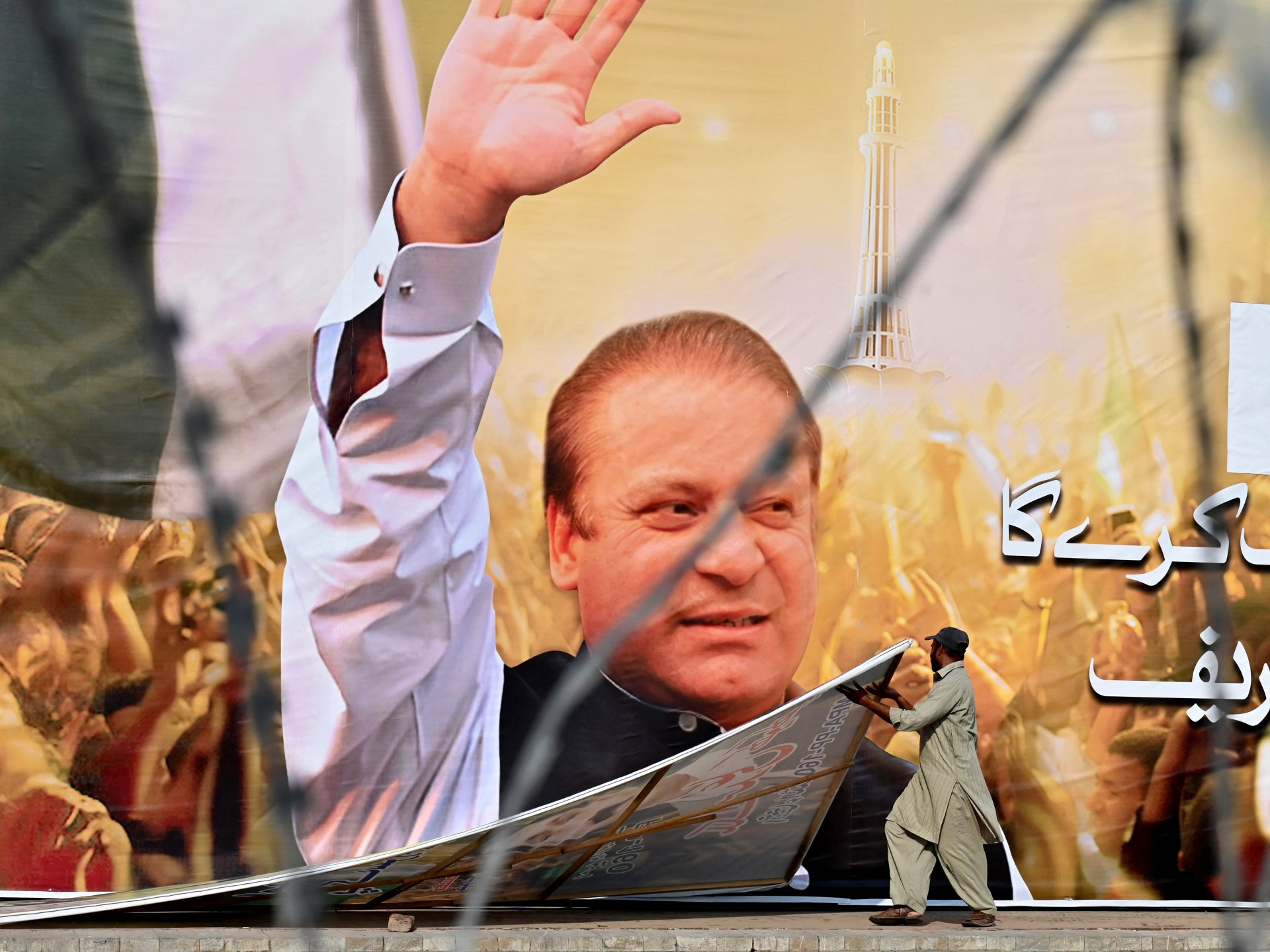
The 73-year-old veteran politician, who spent four years in the UK, is seeking a political comeback.
Nawaz Sharif, Pakistan’s thrice-elected former prime minister, has returned home after four years of self-exile in the United Kingdom to stand in next year’s elections against his biggest rival, former premier Imran Khan.
The 73-year-old veteran politician arrived by chartered flight to Pakistan’s capital Islamabad on Saturday, after which he is expected to lead a rally in his hometown, Lahore, where supporters decorated the city with green and yellow party banners, posters and flags.
“We are completely ready for elections,” Sharif told reporters before his flight took off from Dubai.
“Our country which should have been at the heights of prosperity has really gone backwards,” he said. “How did we get here? Why did it come to this?”
The South Asian nation is facing overlapping security, economic and political crises ahead of polls already pushed back to January 2024, with Khan languishing in jail on corruption charges which he denies, after he was removed in a no-confidence vote in April 2022.
Sharif had not set foot in Pakistan since leaving for London in 2019 to receive medical treatment while serving a 14-year prison sentence for corruption. His convictions remain in force, but a court on Thursday barred authorities from arresting him until Tuesday when he is to appear in court.
While he cannot run for or hold public office because of his convictions, his legal team says he plans to appeal and his party says he aims to become prime minister for a fourth time.
Sharif’s biggest challenge will be to wrestle back his support base from Khan, who despite being in jail, remains popular following his removal. Khan, too, is disqualified from the election because of his August corruption conviction, which he has appealed.
“Sharif’s key challenge is first to establish himself and his party as viable options to replace Imran Khan, who is already popular, and secondly to turn around the economy,” political analyst Ayesha Siddiqa told AFP.
Sharif has said he was removed from government at the behest of the powerful military after he fell out with top generals, who play an outsized role in Pakistani politics. He says the military then backed Khan in the 2018 general election. Khan and the military deny this.
The military and Khan fell out in 2022, and over the last few months, they have been involved in a bruising showdown, which has afforded Sharif some political space. The military denies that it interferes in politics.
“An evergreen rule about Pakistani politics is that your chances of taking power are always greater when you’re in the good books of the army,” Michael Kugelman, director of the South Asia Institute at the Wilson Center, told Reuters news agency.
“Over his long political career, Sharif’s relationship with the military brass has blown hot and cold. It’s now in a relatively cordial phase, and he stands to benefit politically.”
Pakistan is currently being led by a caretaker government in the run-up to January’s election.

World
Melania Trump statue sawed off at the ankles and stolen in Slovenia
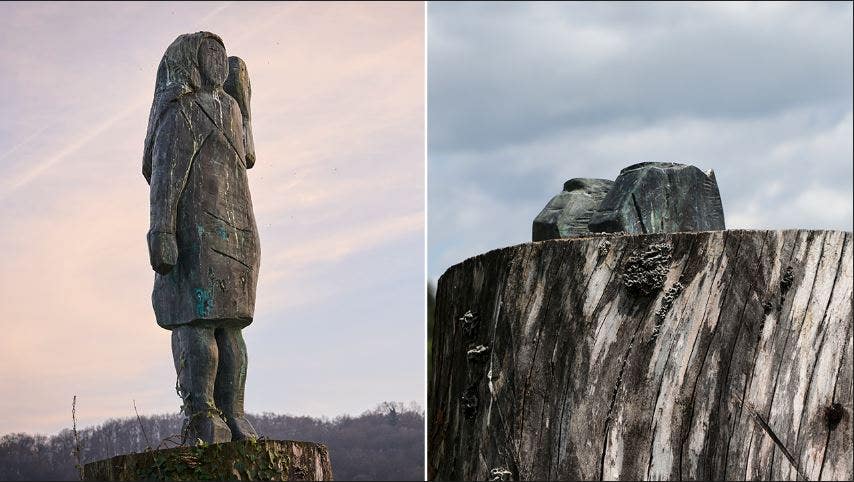
A bronze statue of Melania Trump was sawed off at the ankles and stolen this week in the first lady’s native Slovenia, police said.
The statue replaced a wooden one that was erected near her hometown of Sevnica in 2020 at the end of President Donald Trump’s first term after it was targeted in an arson attack.
Both statues were a collaboration between Brad Downey, an artist from Kentucky, and a local craftsman, Ales “Maxi” Zupevc.
The original figure, made of wood and cut from the trunk of a linden tree, portrayed the first lady in a pale blue dress, similar to the one she wore at Trump’s 2016 inauguration.
FIRST LADY MELANIA TRUMP TURNS 55: HER LIFE IN PHOTOS, FROM SLOVENIA TO WHITE HOUSE
A bronze statue of Melania Trump was sawed off at the ankles and stolen this week in the first lady’s native Slovenia, police said. (Associated Press)
The new statue was placed on the same stump as the old one and modeled after the previous design. In July 2020, Downey said the statue would be made “as solid as possible, out of a durable material which cannot be wantonly destroyed,” according to The Guardian.
Slovenian police spokesperson Alenka Drenik Rangus said Friday that police were investigating after the vandalism and theft were reported Tuesday.
Franja Kranjc, a worker at a bakery that sells cakes with the first lady’s name in support of her, told The Associated Press the rustic likeness wasn’t well liked.
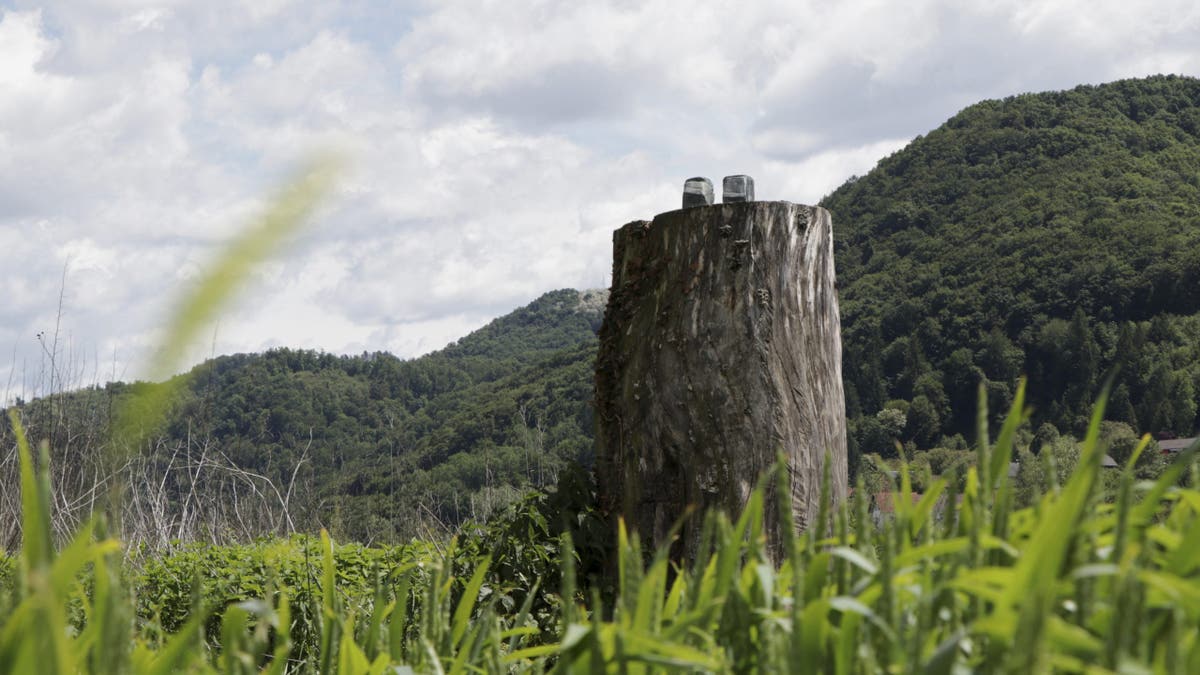
Only the ankles remain of a Melania Trump statue that was sawed off and stolen, Slovenian police said. (AP Photo/Relja Dusek)
WHITE HOUSE PRESS SECRETARY SAYS STATUE OF LIBERTY GOING NOWHERE, REPLIES TO FRENCH POLITICIAN
“I think no one was really proud at this statue, not even the first lady of the USA,” Kranjc said. “So, I think it’s OK that it’s removed.”
Zupevc said he and Melania Trump were born in the same hospital, which partly inspired him to create the design. He carved the statue with a chainsaw and sanded it with a power tool.
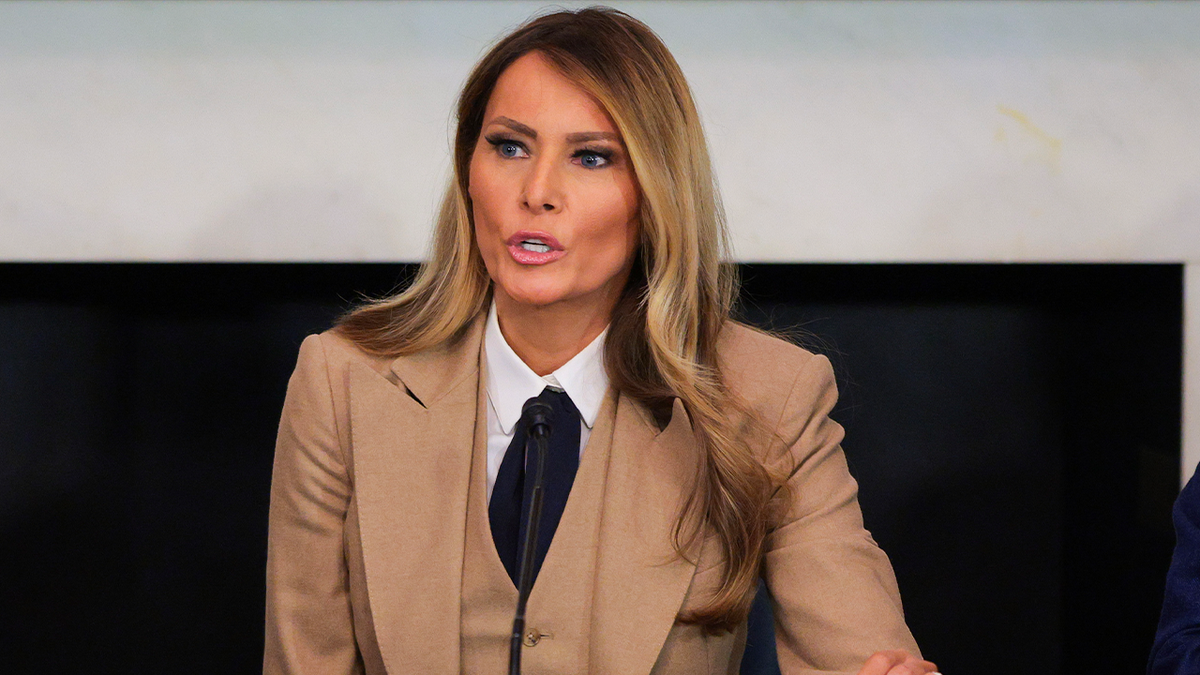
The statue was a rustic likeness of the first lady. (Getty Images)
“I plugged in my angle grinder. … I worked and made mistakes … finished the hair … the eyes and all. Then, I called my brother, who said, ‘Spitting image of our waitress.’ And so it was,” Zupevc said during a documentary film by Downey on the making of the original statue.
A plaque next to the statue says it is “dedicated to the eternal memory of a monument to Melania which stood at this location.”
Born Melanija Knavs in nearby Novo Mesto in 1970, the first lady grew up in Sevnica while Slovenia was part of the Communist-ruled former Yugoslavia. An Alpine nation of 2 million people, Slovenia is now a member of the European Union and NATO.
The Associated Press contributed to this report.
World
Commissioner Hansen presents plan to cut farming bureaucracy in EU

European Commissioner for Agriculture Christophe Hansen presented his simplification plan for the agricultural sector during a meeting organised by Euronews.
The European Commission unveiled the plan, which aims to simplify the European Union’s agricultural rulebook, on Wednesday in Brussels.
The measures are designed to reduce what the Commission sees as unnecessary administrative burdens in implementing the Common Agricultural Policy (CAP), the EU’s farming subsidy framework.
Hansen believes the proposed strategy should serve all stakeholders. The plan, therefore, aims to reduce the administrative burden for farmers and member states.
“What is felt to be an administrative burden on the farm is not only the CAP (Common Agricultural Policy), but also environmental legislation, health legislation, and often national or regional legislation, so I think that everyone must contribute to reducing this bureaucracy,” Hansen explained.
This simplification plan could potentially save farmers up to €1.58 billion a year and the national authorities €210 million. The package of measures is aimed in particular at organic farming and small farms, which play an essential role in rural areas’ economic activity.
The plan proposes exemptions from environmental rules, also known as conditionalities. Hansen points out that this package aims not to reform the sector, but to adjust certain rules.
For example, Hansen said, “If grassland remains in place for more than five years, it becomes permanent grassland. This is a devaluation of this farmland because it can no longer be used as arable land. After four years or so, farmers plough to preserve this status.”
“For me, it’s more valuable if the grass stays for seven years rather than five. So this is environmental progress. It’s the applicability (of the rules) that changes,” he added.
Flexibility and financial support
The European Commission also wants to help small farmers obtain financial aid and make their farms more competitive. The institution is considering an offer of up to €50,000.
Hansensuggested digitalising the sector, mentioning, for example, a digital portfolio to facilitate checks.
“I, as a farm, have my digital wallet and if the water authority needs to know something about my land, they can turn to that wallet,” Hansen explained.
Hansen further reiterated his desire to make the profession attractive again and to help professionals.
“It’s very important that we reduce the stress on our farmers, because at the moment it all depends on the Member State. They have to deal with five, six, seven controls a year, which causes enormous stress for our farmers,” Hansen insisted.
“That’s why we also want to reduce these controls, and the member states are also obliged to act. We want to reduce the number of checks to just one a year,” he added.
Environmental NGOs believe that the plan threatens the agricultural sector’s green objectives. Hansen, however, rejects this criticism and emphasises that he is responding to the concerns of farmers, who have repeatedly protested against overly restrictive European regulations.
Yet, this simplification plan is only the first step. The European Commission intends to present new measures later this year.
World
Gazans Once Escaped To Rafah. Now Israel Is Razing It.

Last year, a million Palestinians fled to Rafah, the southernmost city in the Gaza Strip, to escape the brunt of Israel’s bombardment in its war against Hamas. When Israeli forces later invaded Rafah itself, they flattened areas along the border with Egypt, but many neighborhoods were largely spared the worst of the war.
That is no longer the case.
The Israeli military has destroyed extensive parts of Rafah since it ended a cease-fire in March after talks with Hamas collapsed. In early May, after much of the destruction was already complete, Israel announced it would soon launch an “intensive” escalation of its campaign in Gaza. Over the previous two nights, strikes have killed dozens of Palestinians in Gaza, Palestinian officials said. On Tuesday, the Israeli military targeted Muhammad Sinwar, a top Hamas leader in Gaza, near a hospital in Khan Younis.
Satellite images analyzed by The New York Times show that the Israeli military has flattened large areas in and around the city of Rafah and built new military infrastructure in the last two months.
Israeli leaders say capturing more territory inside Gaza will pressure Hamas to surrender and release the remaining hostages that the group has held since it led a deadly attack on Israel on Oct. 7, 2023. Israel’s defense minister vowed that Israeli forces would “clear out” the areas and “prevent any threat,” including in Rafah.
Israeli security officials have previously said that tunnels between Egypt and Gaza have allowed Hamas to stock up on weaponry and other supplies.
In response to a question from The Times about the Israeli military’s operations in Rafah, the military said that it was part of an effort to secure operational control and conduct counterterrorism operations.
“We will replicate the model implemented in Rafah in other areas of the Strip as well,” said Effie Defrin, the Israeli military spokesperson, in a press briefing last week.
Demolishing Block by Block
Here is what the operation looks like on the ground: Four excavators could be seen in a video verified by The Times tearing down a row of buildings in Rafah’s Shaboura neighborhood in April. The video, first shared on an Israeli Telegram channel, was taken from an armored vehicle.
Satellite imagery shows that hundreds of buildings were destroyed in this neighborhood during the month of April, including on the block where the video was filmed.
Earlier this month, the Israeli security cabinet approved a new plan to call up tens of thousands of additional soldiers, to seize and hold territory in the embattled enclave, and to forcibly displace Palestinians to the south. But the satellite imagery shows the areas of the south where buildings are still standing are getting smaller and smaller.
Another video shows four buildings destroyed in a controlled demolition. The video, uploaded on an Israeli soldier’s Instagram account and shared by the Palestinian journalist Younis Tirawi on his X account, was filmed in northern Rafah, where much of the destruction has taken place. Satellite image shows that the demolition took place sometime in April.
New Construction
Israeli forces are not just clearing land. They are building on it.
One new road already stretches more than three miles from the Israeli border across Rafah into agricultural areas. It is protected by berms, trenches and several military outposts.
And other construction is moving at a rapid clip, the satellite images show.
Several new military outposts, often graded, paved and surrounded by defensive walls, have been built across southern Gaza in the past month. Soldiers have also commandeered buildings to use as bases, such as an under-construction hospital.
Israel calls the road it has constructed from the Israeli border the “Morag Corridor,” which Mr. Netanyahu said last month was intended to cut Rafah off from the rest of the enclave. The name is a reference to a Jewish settlement that existed in the area until Israel withdrew its soldiers and civilians from Gaza two decades ago.
What the construction might mean for the long term is uncertain. Some Israeli officials have agitated for Israel to rebuild Jewish settlements in the enclave, but Mr. Netanyahu has rebuffed the prospect for now.
Mr. Netanyahu said last week, after much of the construction and razing in Rafah was already in progress, that Israel was “on the eve of a forceful entry to Gaza.”
-

 Austin, TX6 days ago
Austin, TX6 days agoBest Austin Salads – 15 Food Places For Good Greens!
-

 Technology1 week ago
Technology1 week agoNetflix is removing Black Mirror: Bandersnatch
-

 World1 week ago
World1 week agoThe Take: Can India and Pakistan avoid a fourth war over Kashmir?
-

 News1 week ago
News1 week agoReincarnated by A.I., Arizona Man Forgives His Killer at Sentencing
-

 News1 week ago
News1 week agoJefferson Griffin Concedes Defeat in N.C. Supreme Court Race
-

 News1 week ago
News1 week agoWho is the new Pope Leo XIV and what are his views?
-

 Movie Reviews1 week ago
Movie Reviews1 week agoFight or Flight (2025) – Movie Review
-

 News1 week ago
News1 week agoEfforts Grow to Thwart mRNA Therapies as RFK Jr. Pushes Vaccine Wariness


